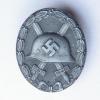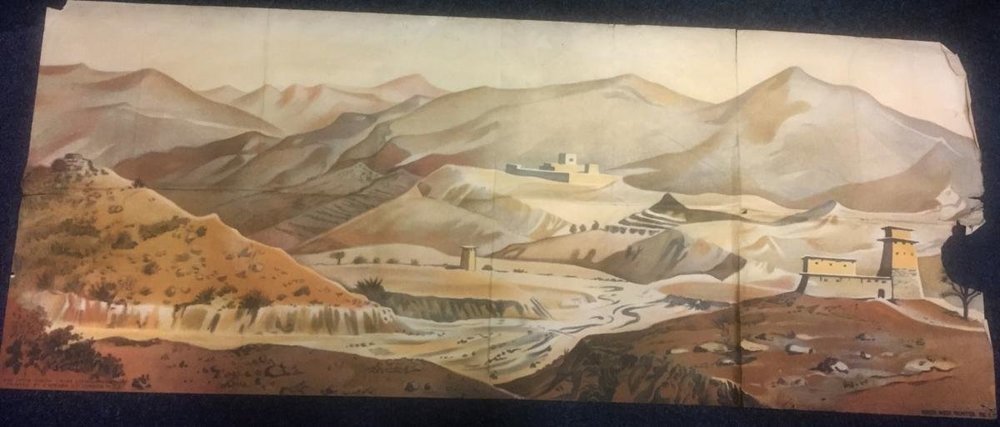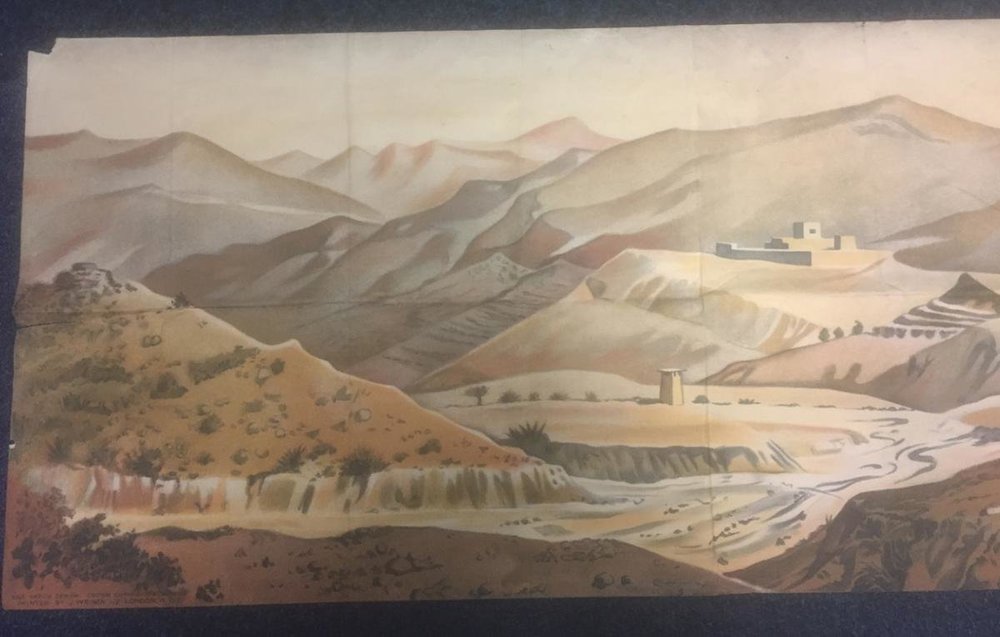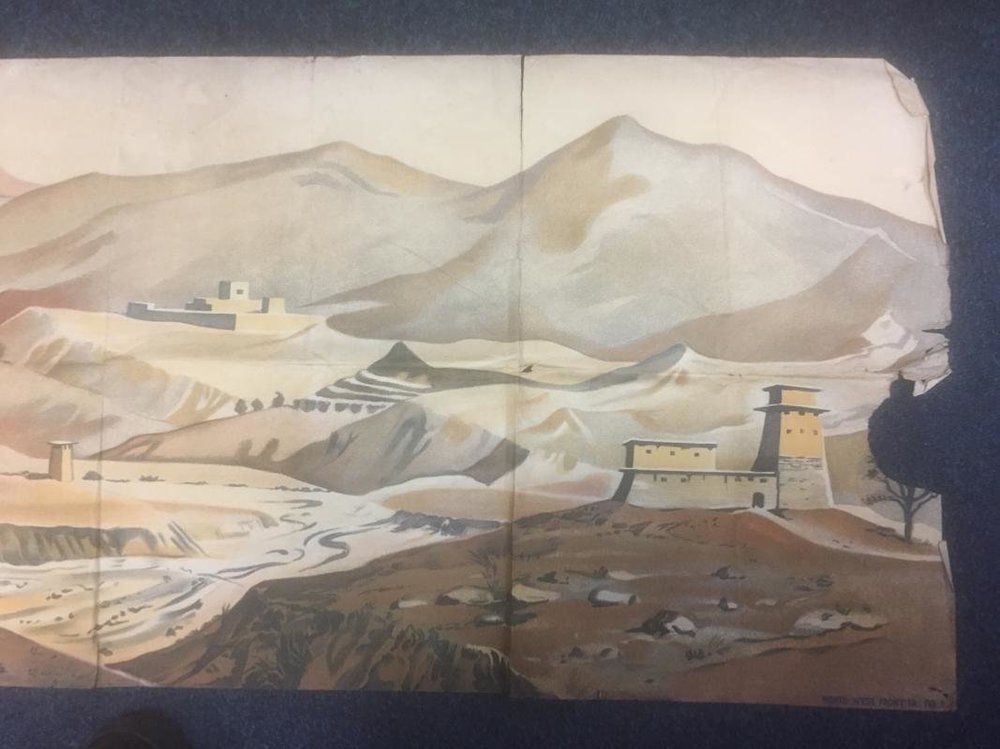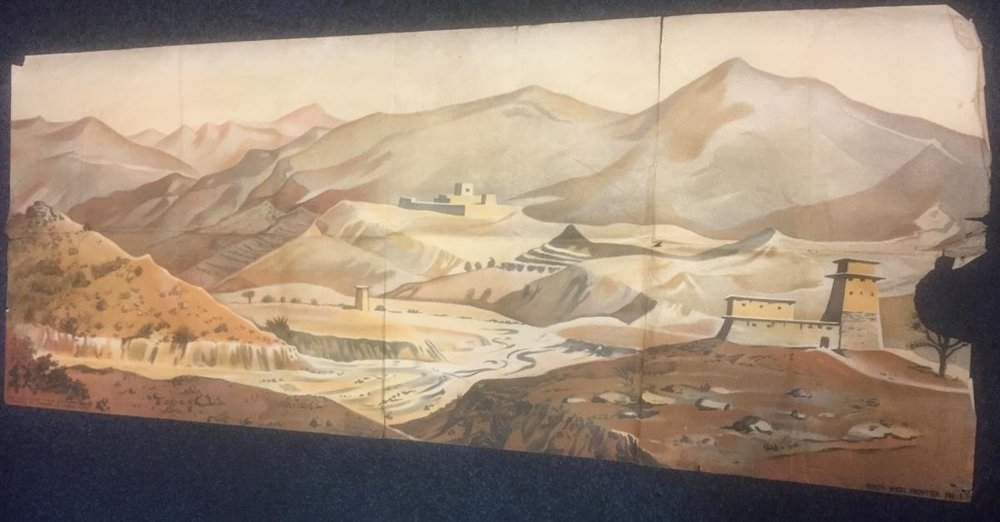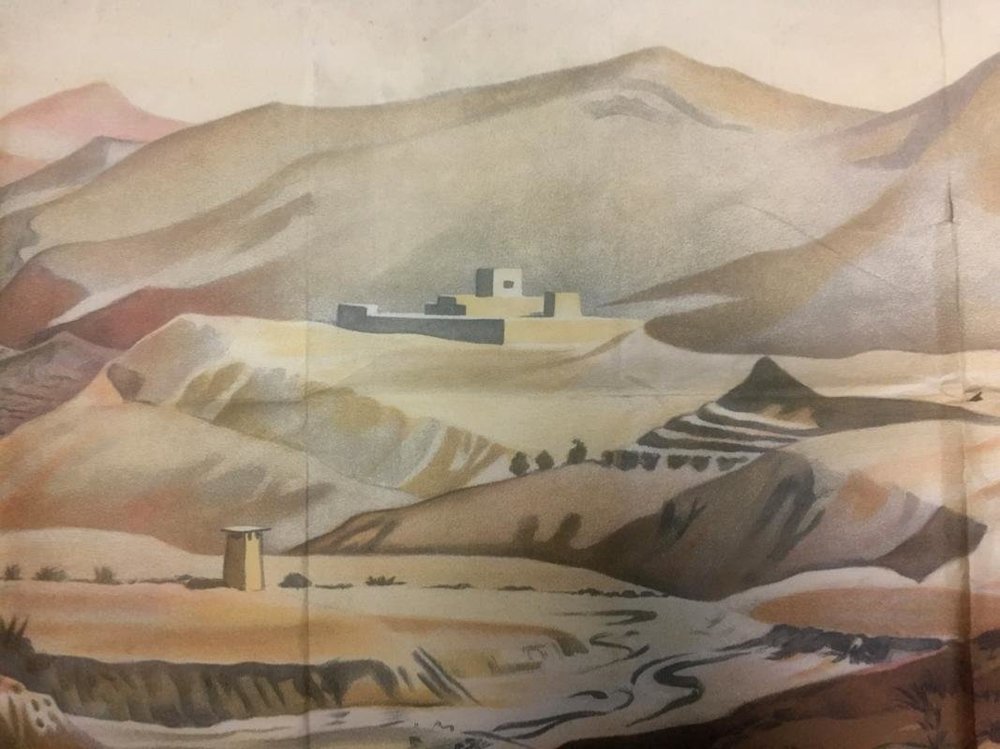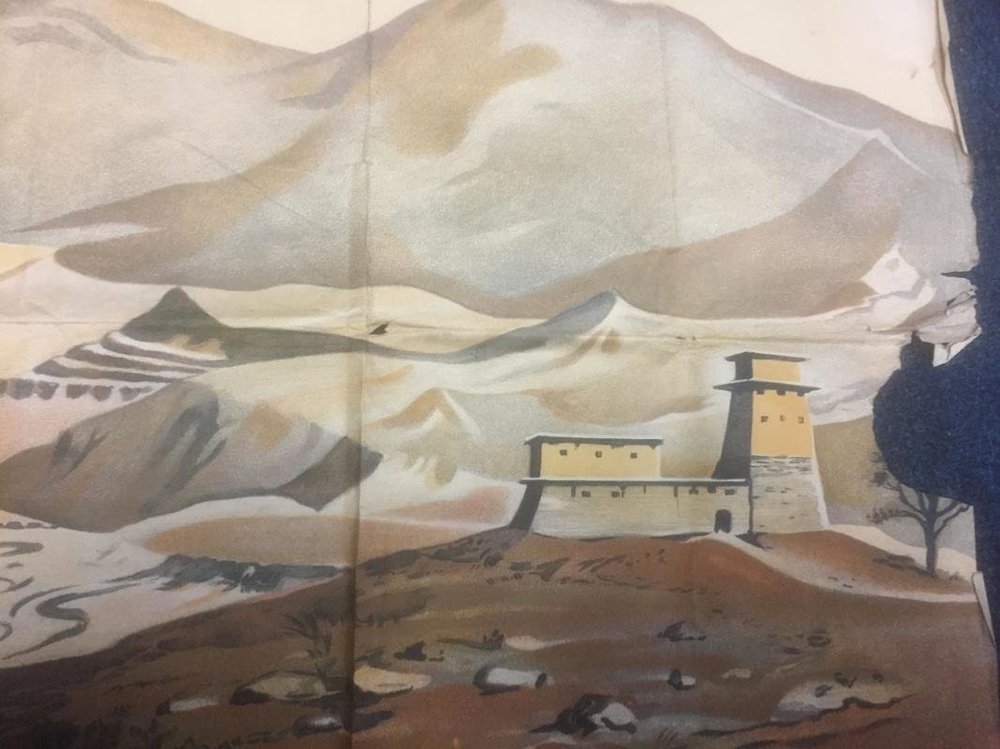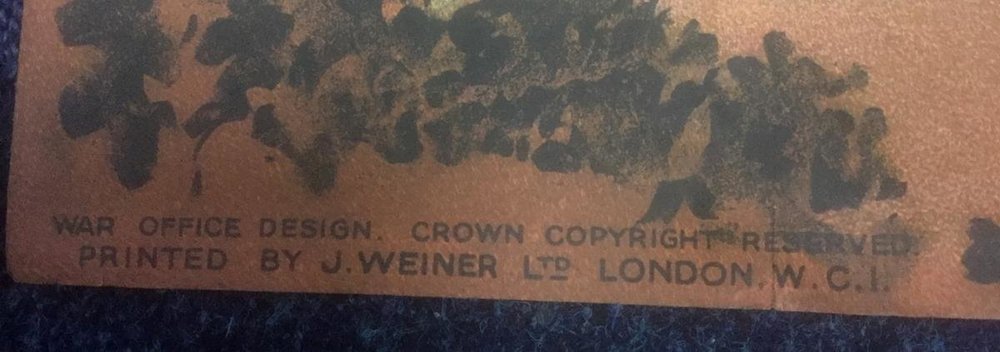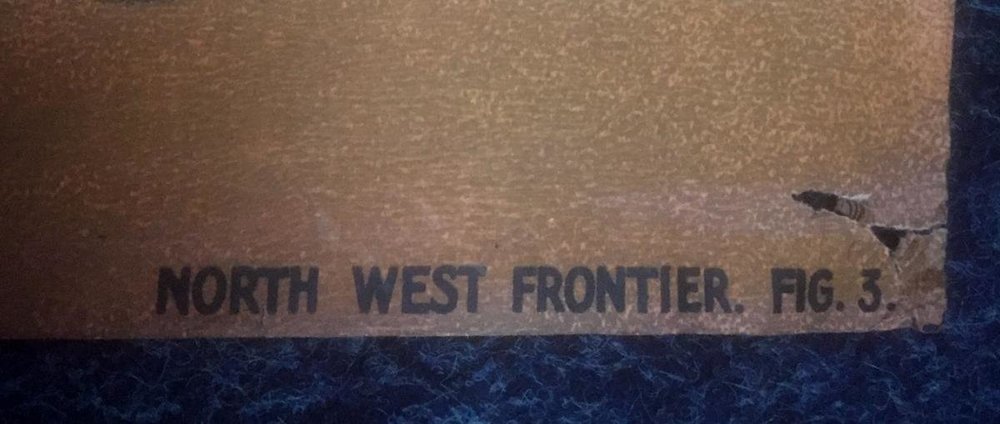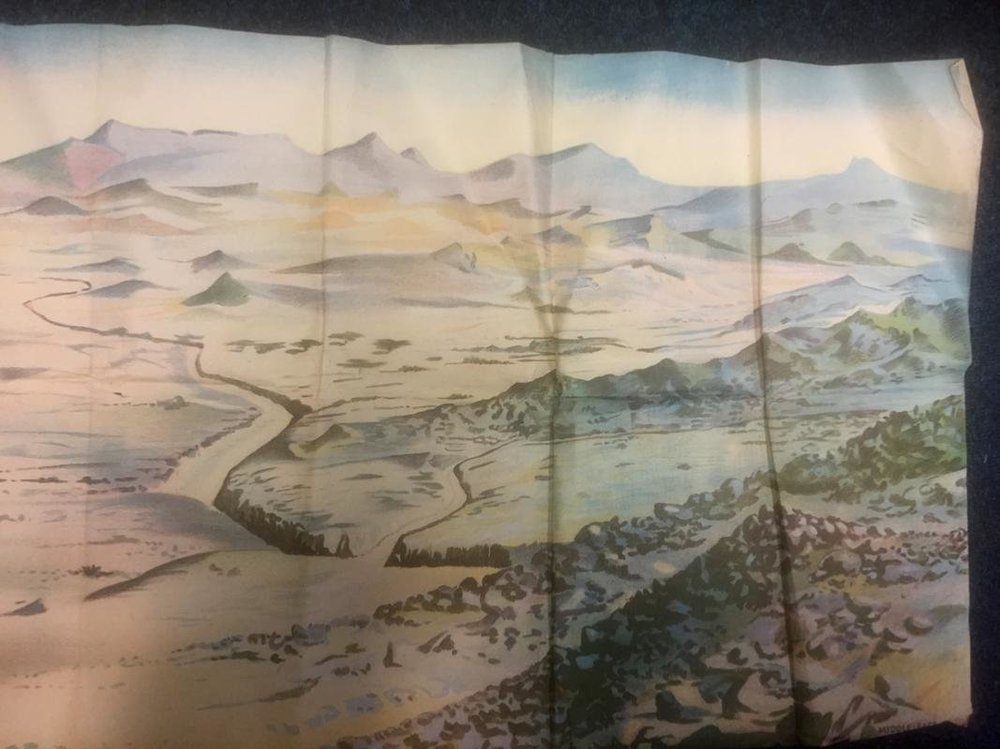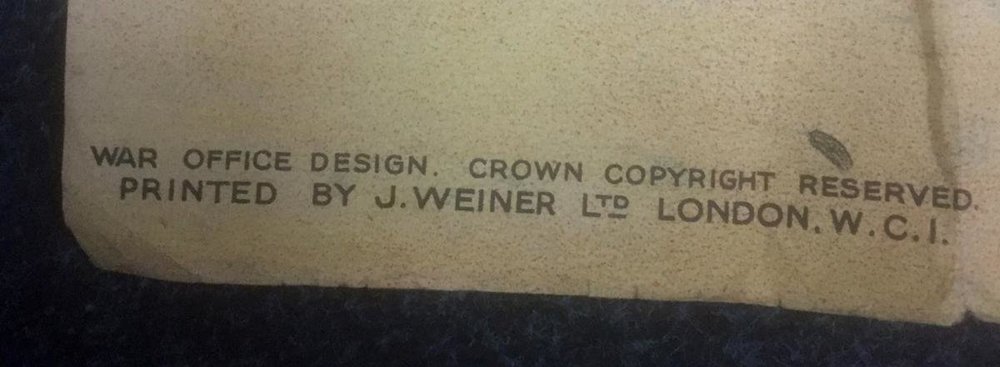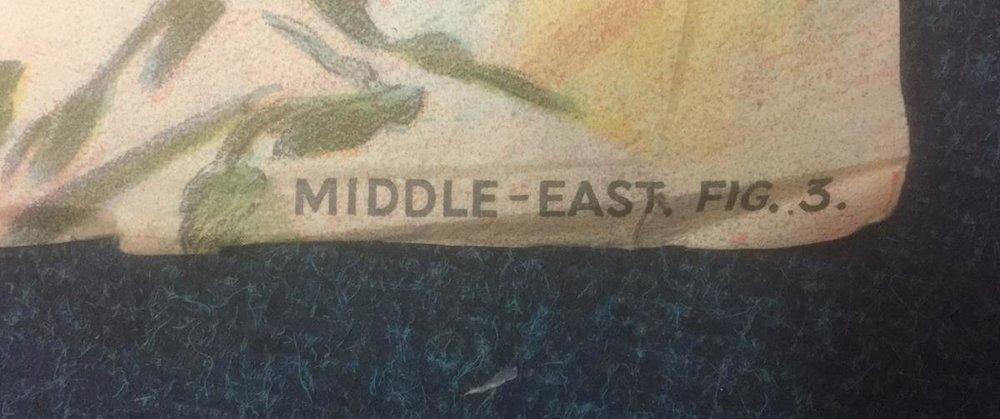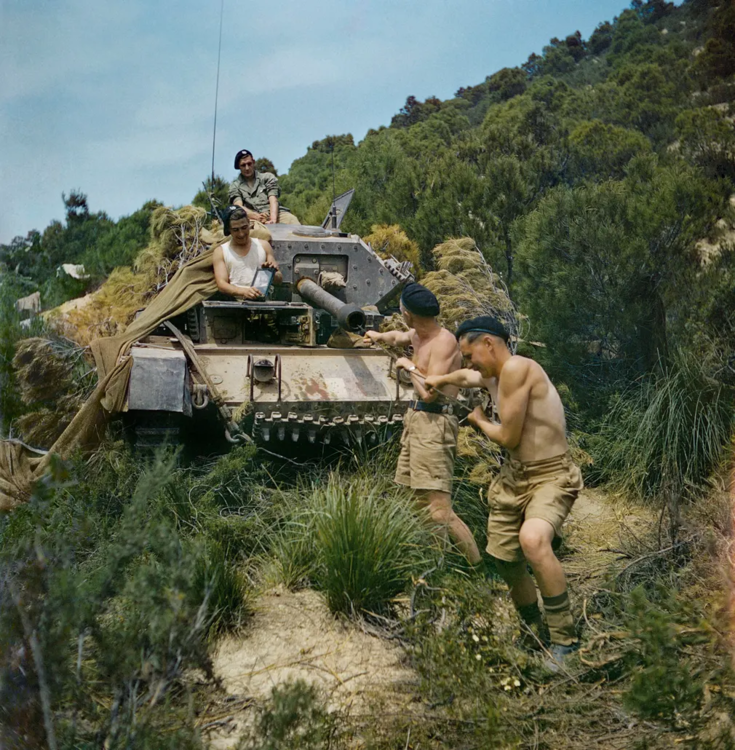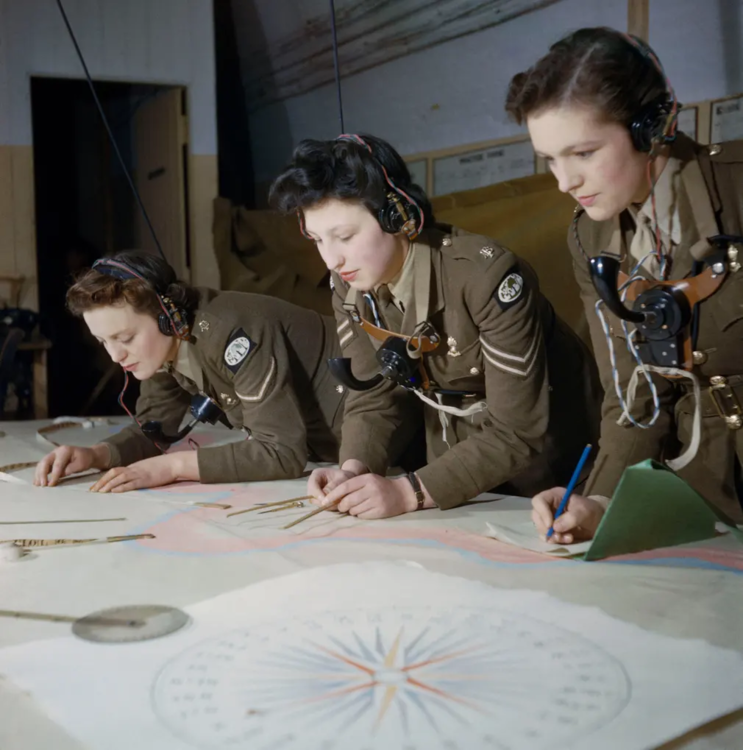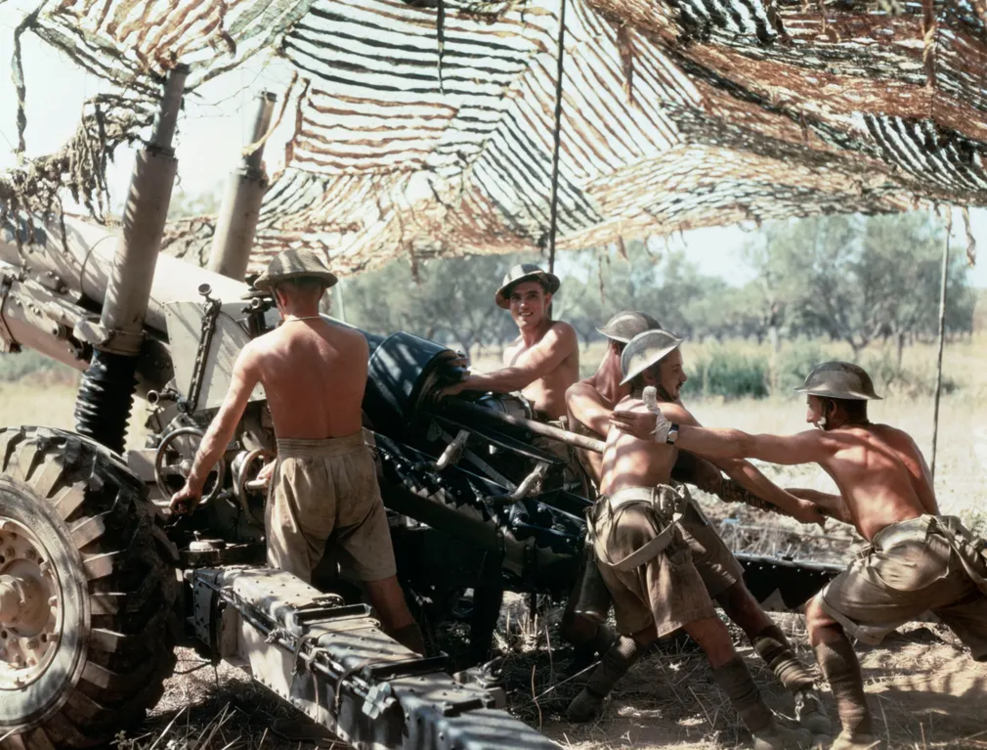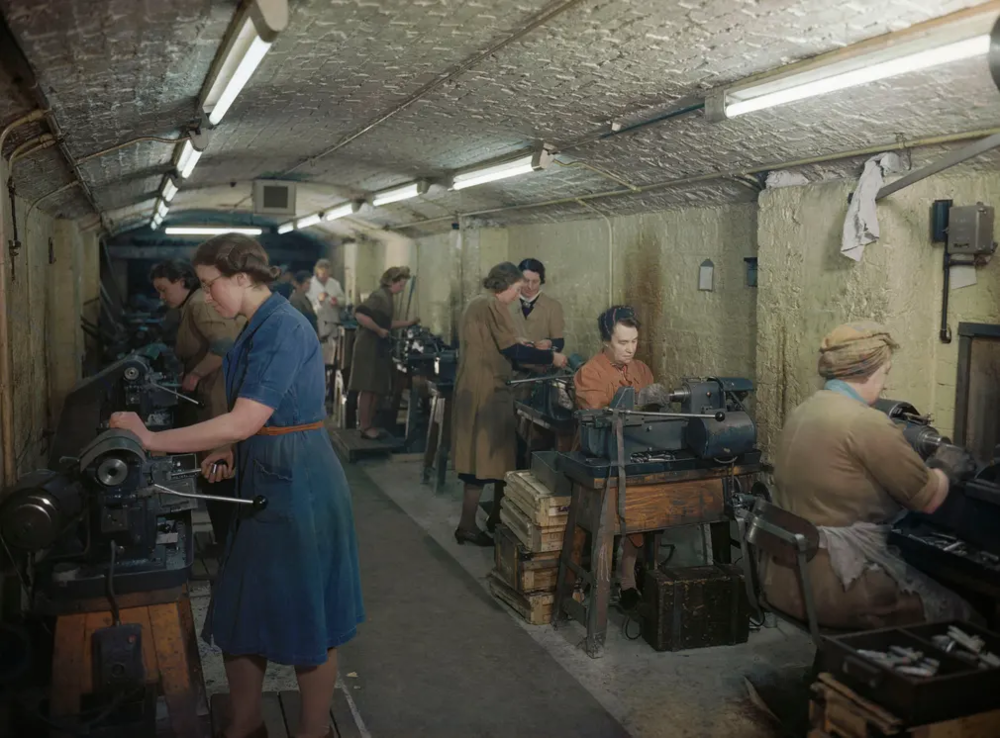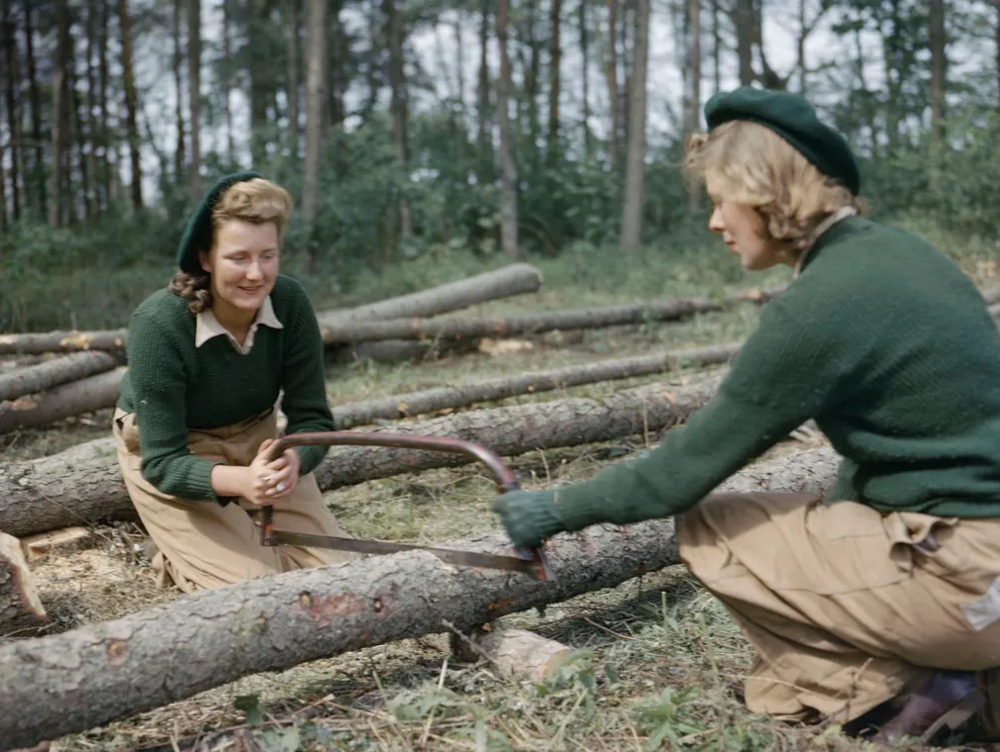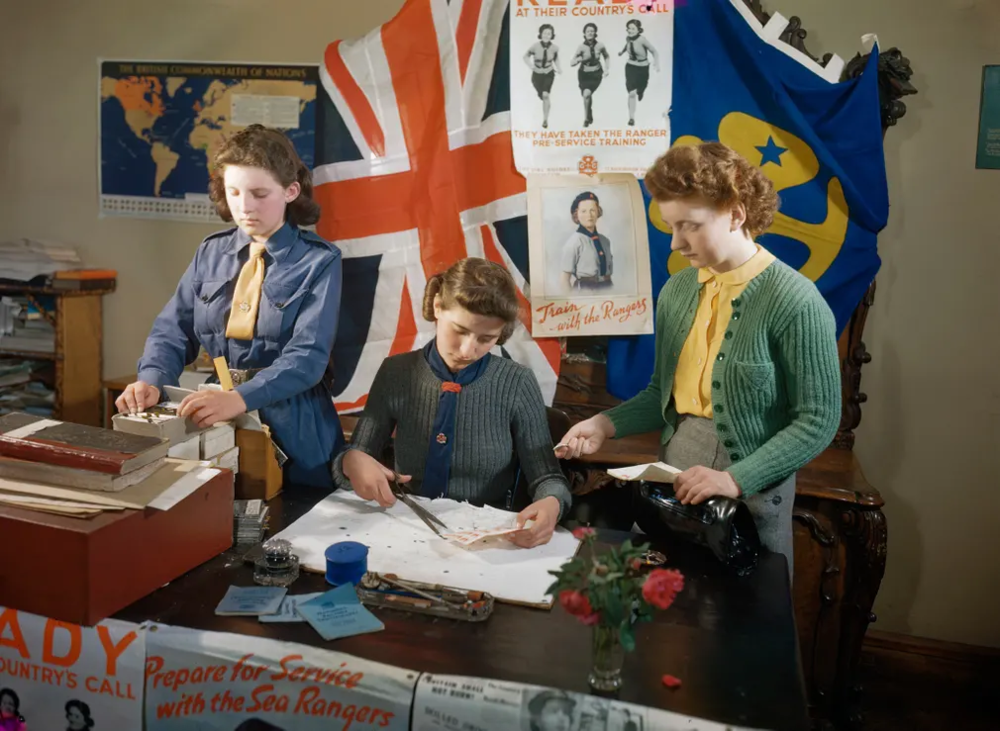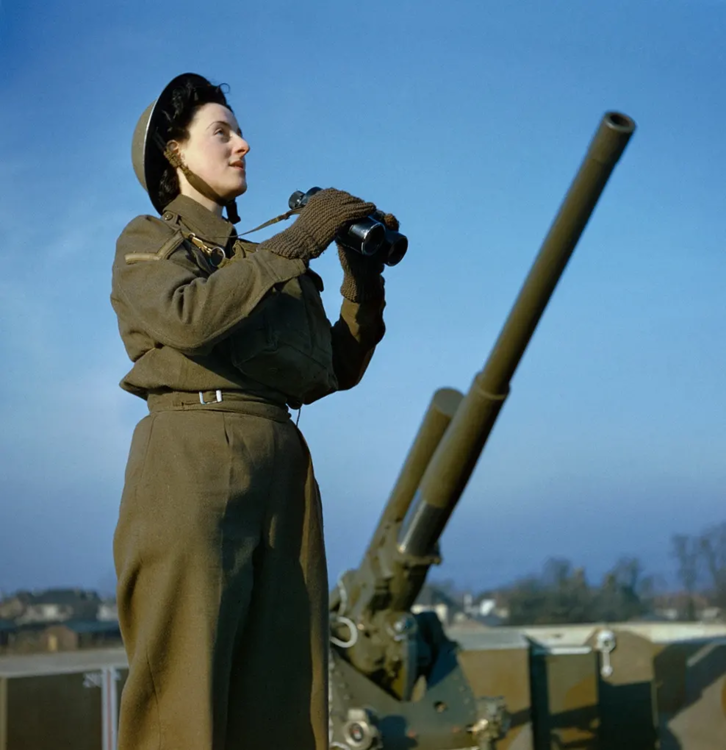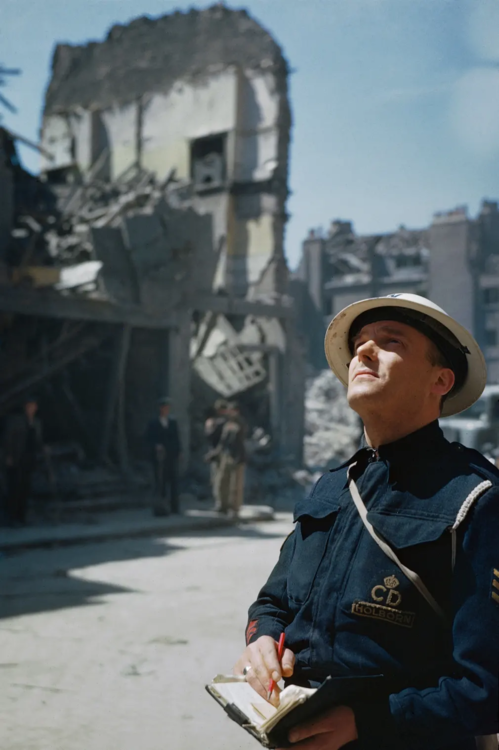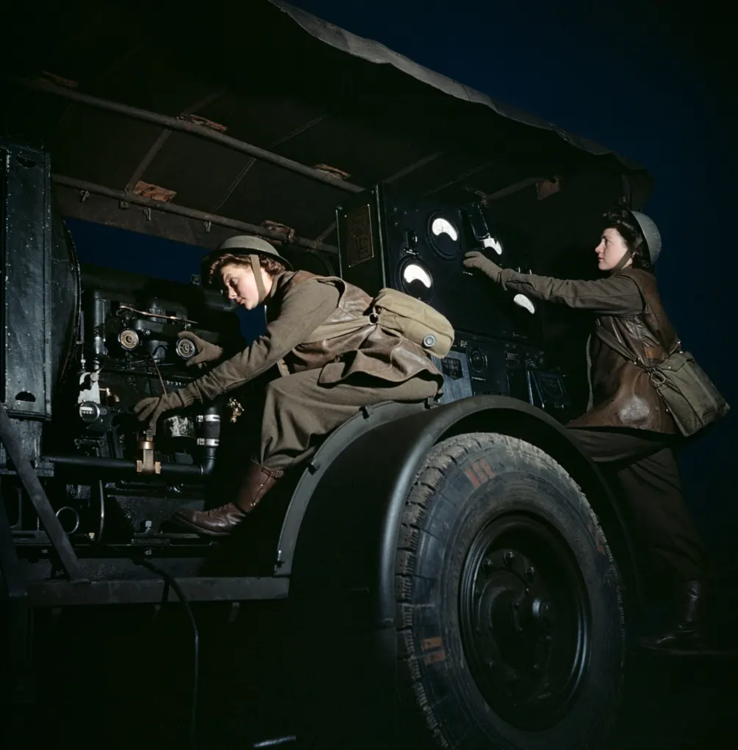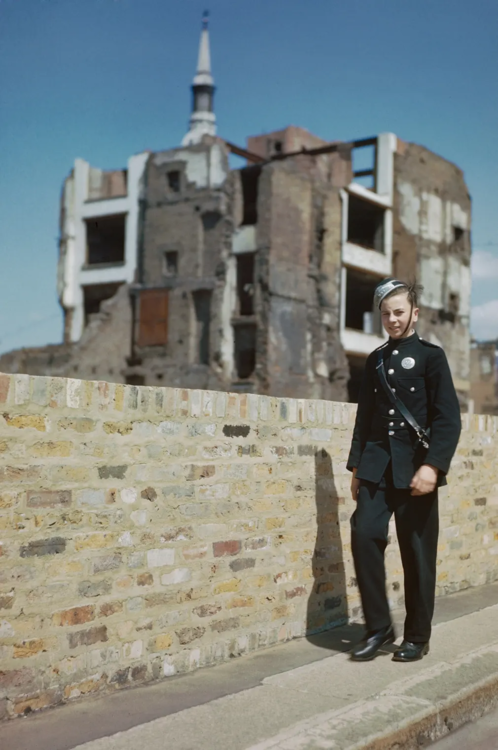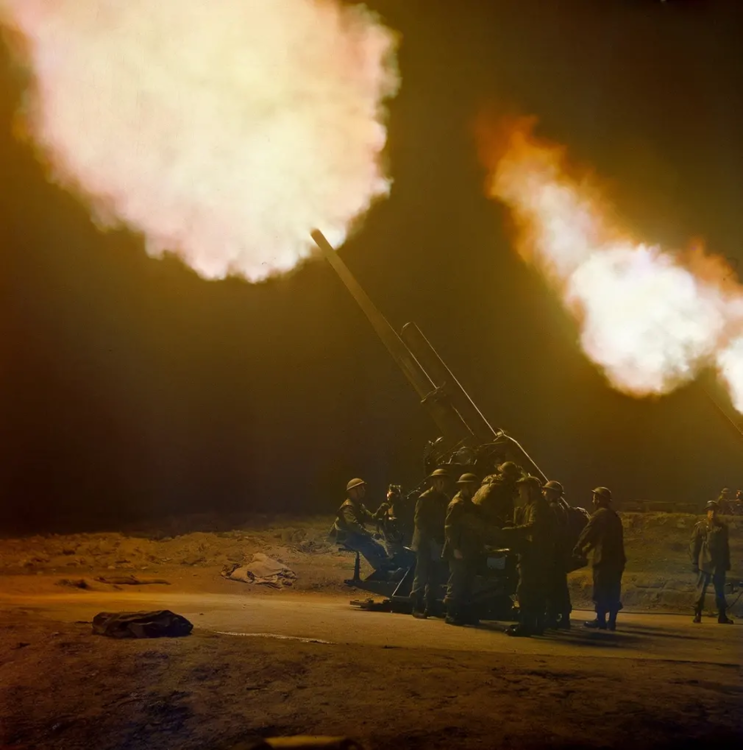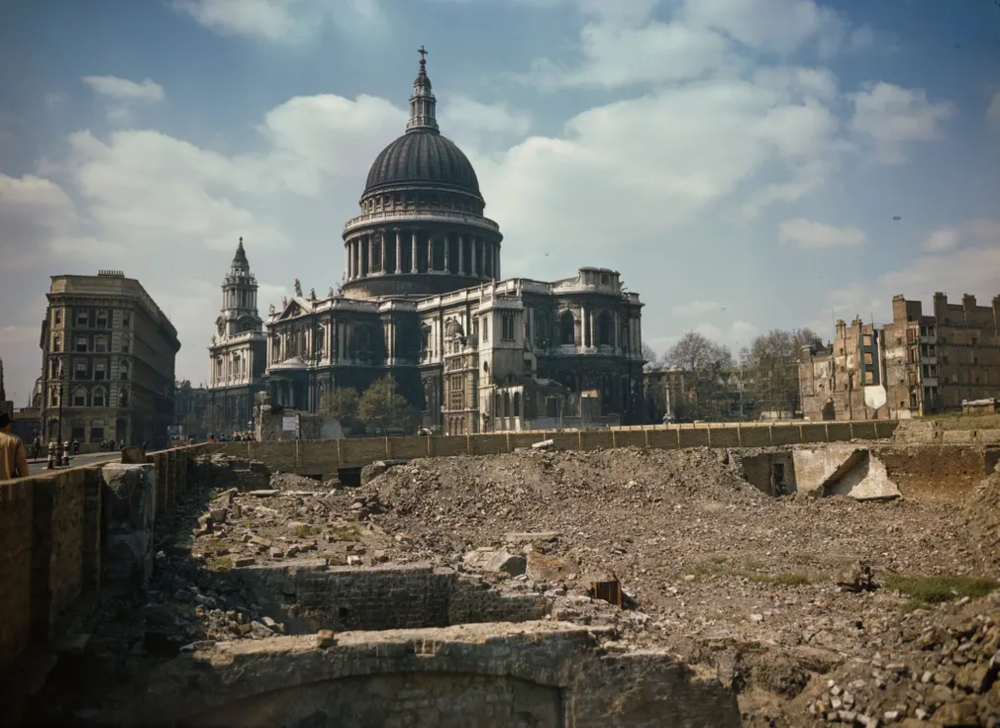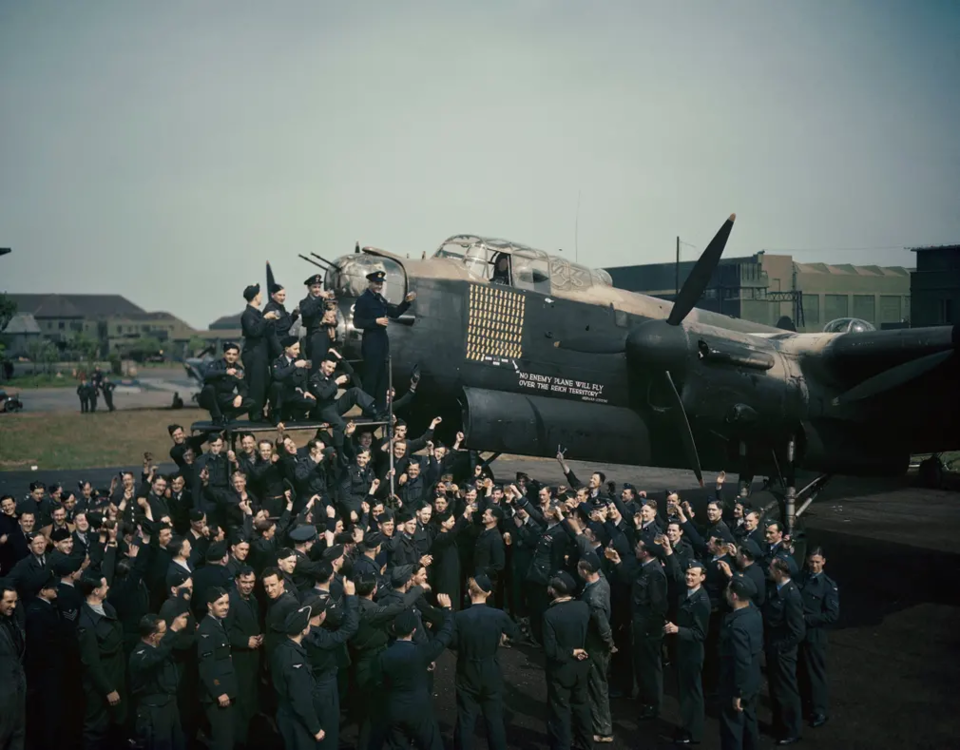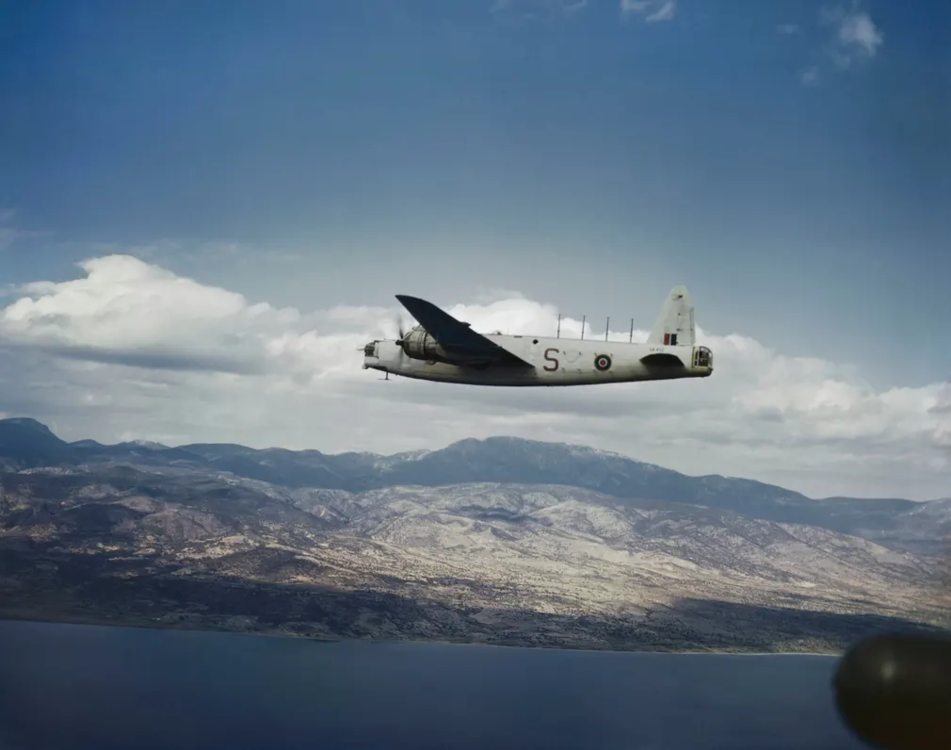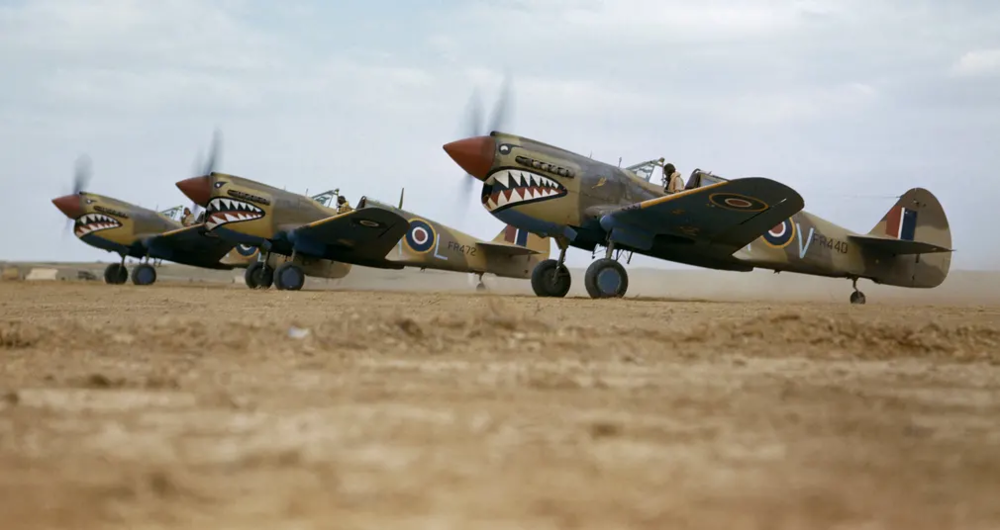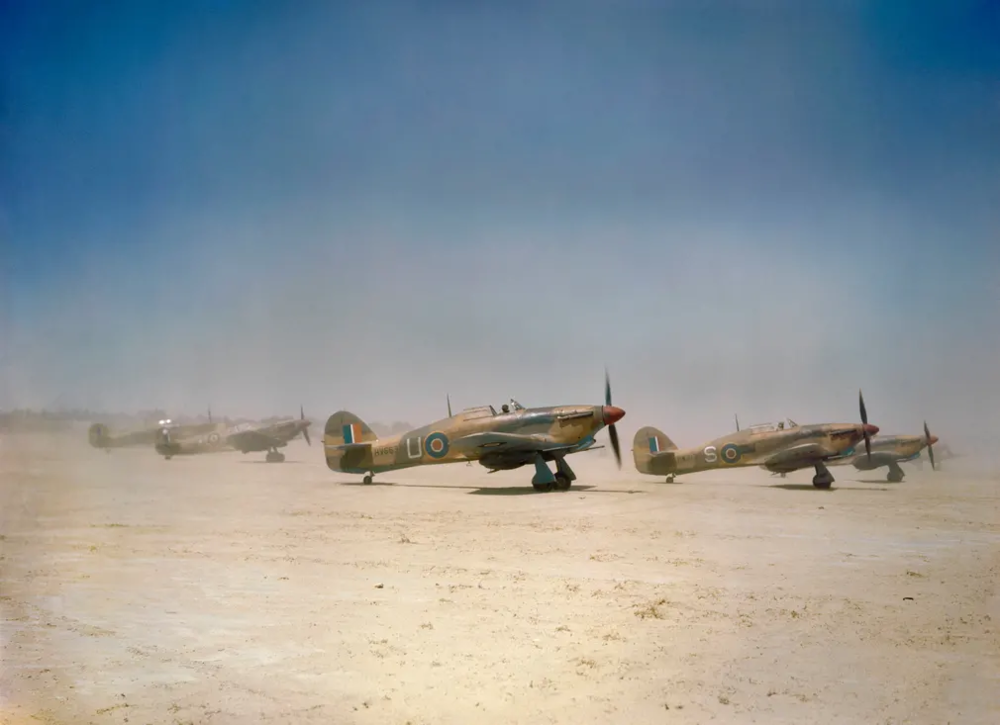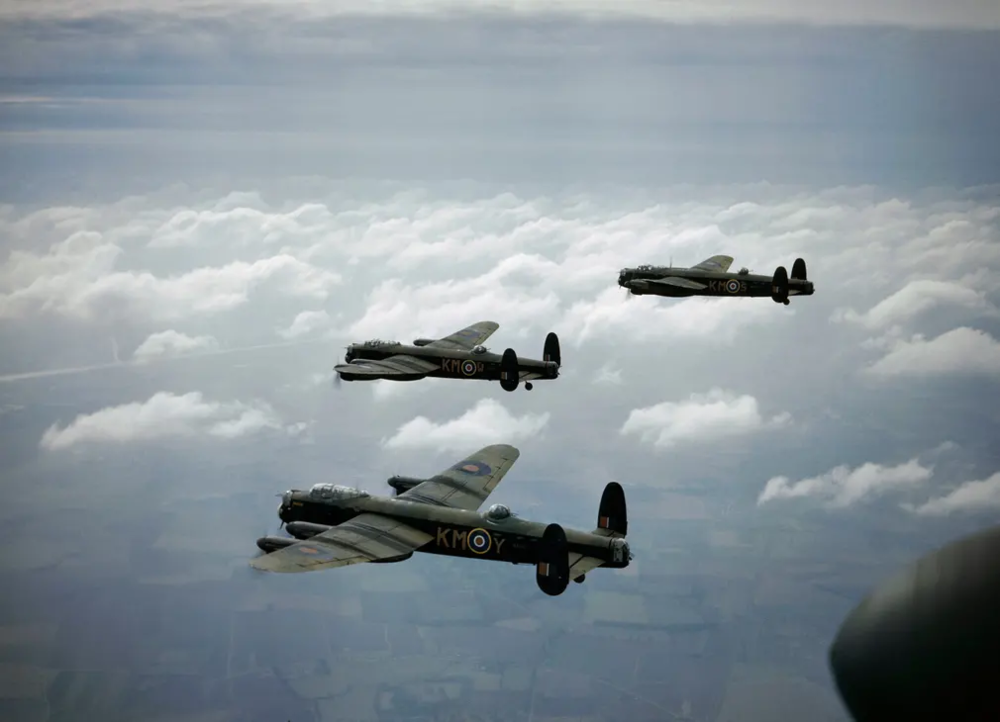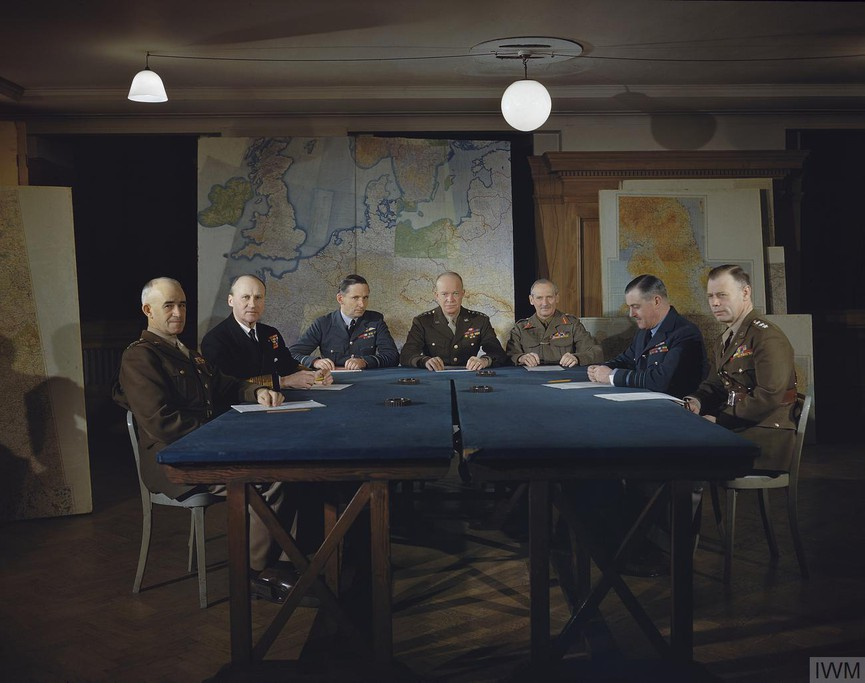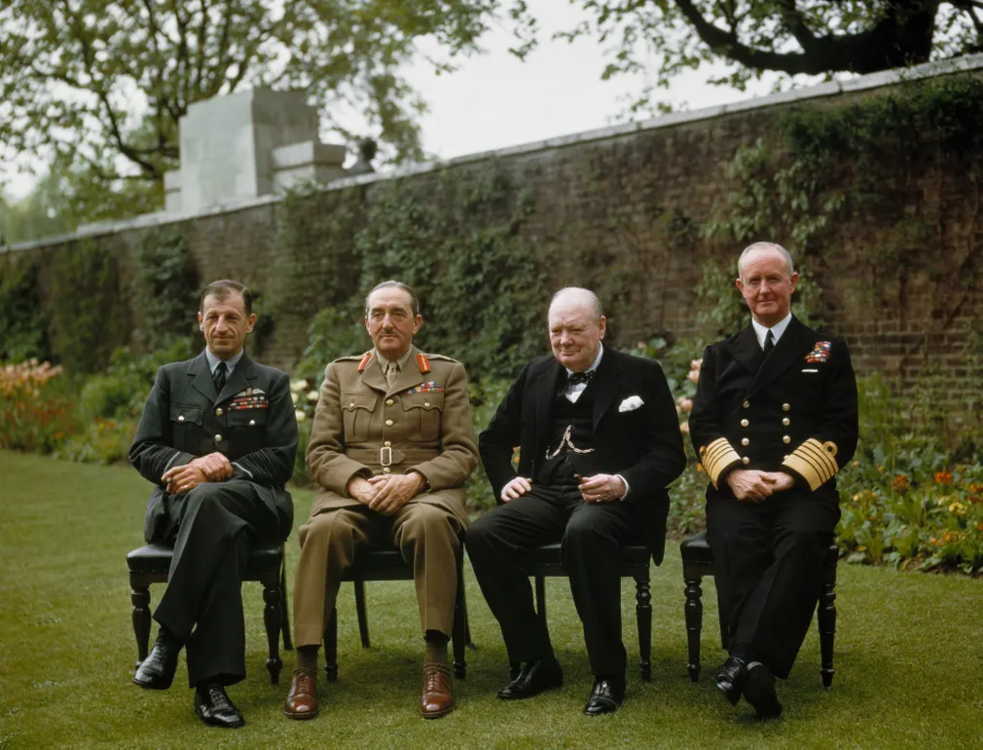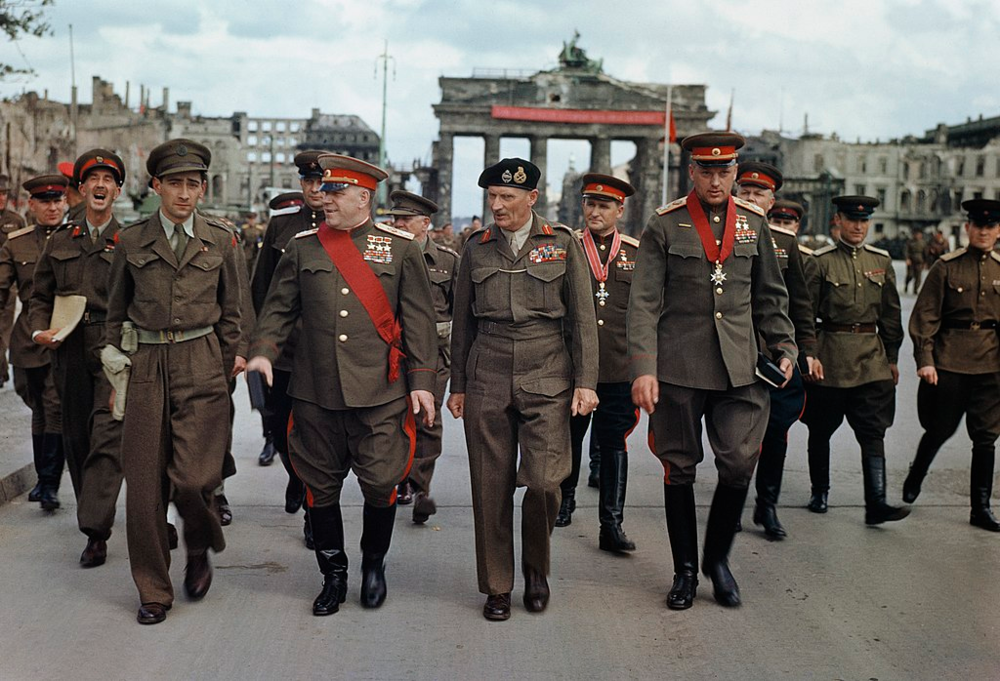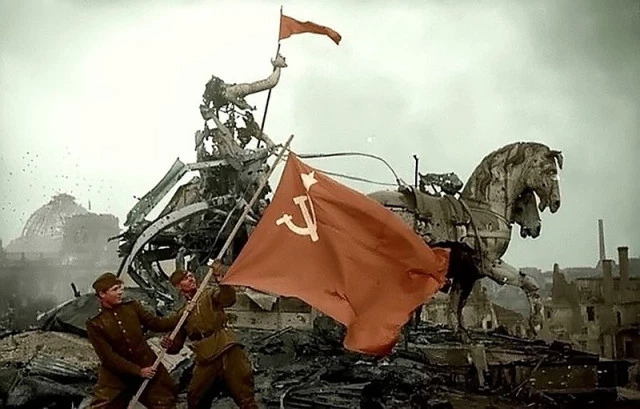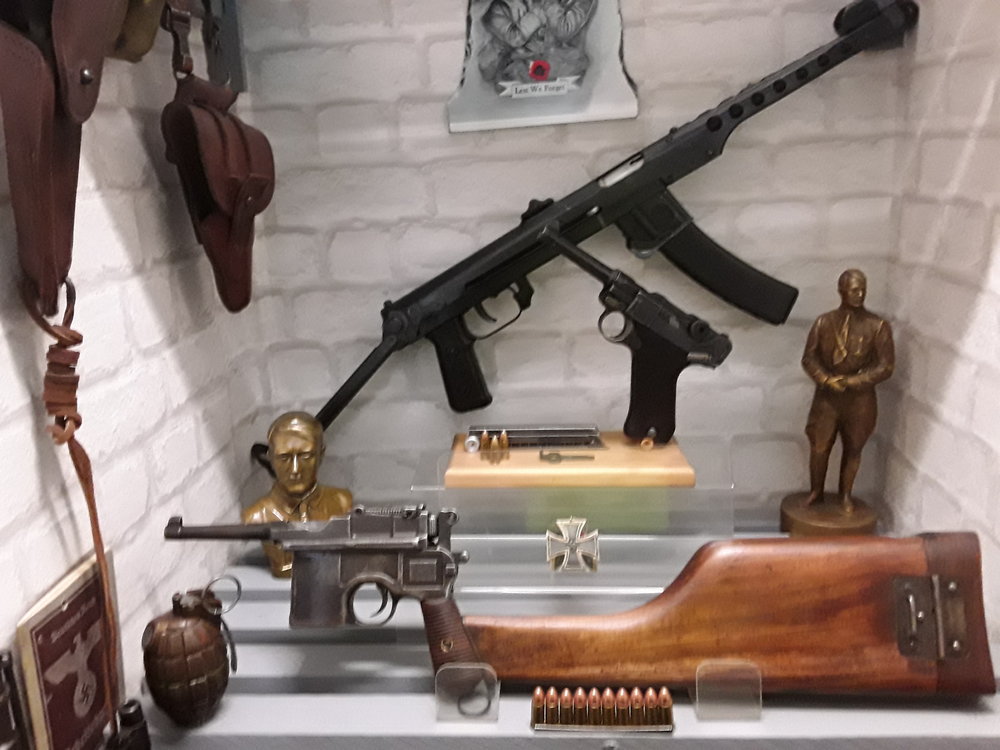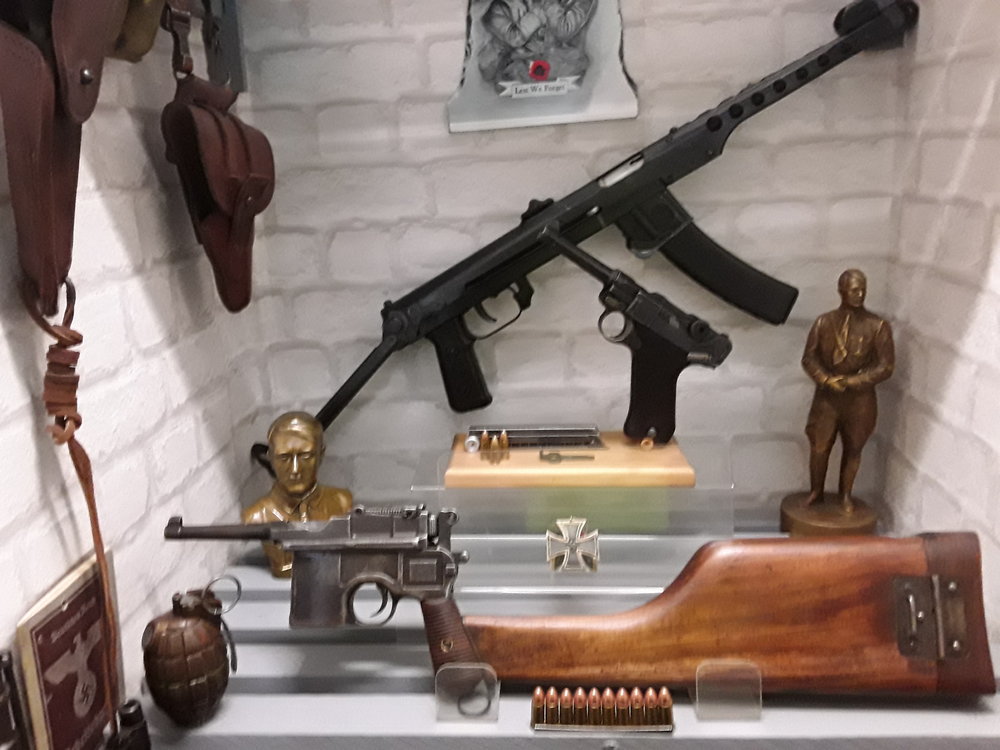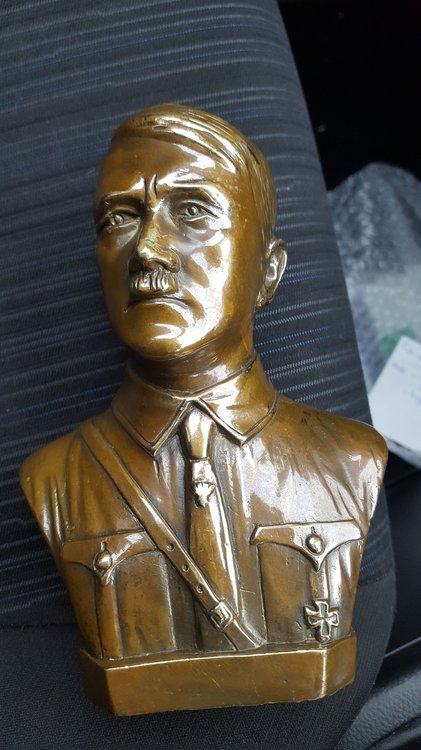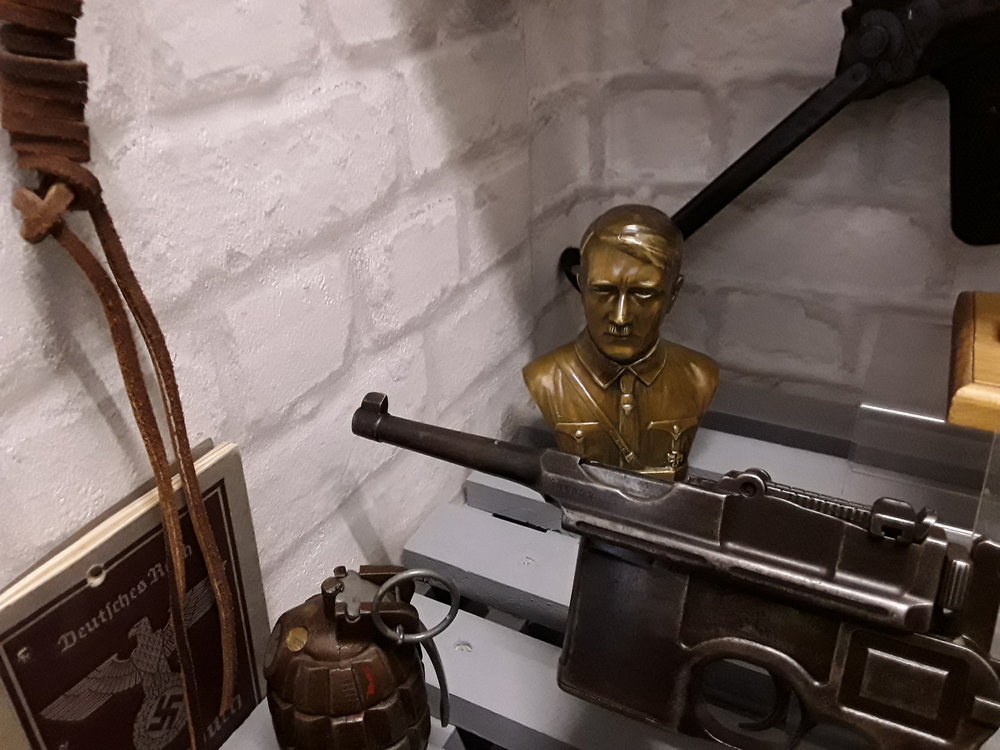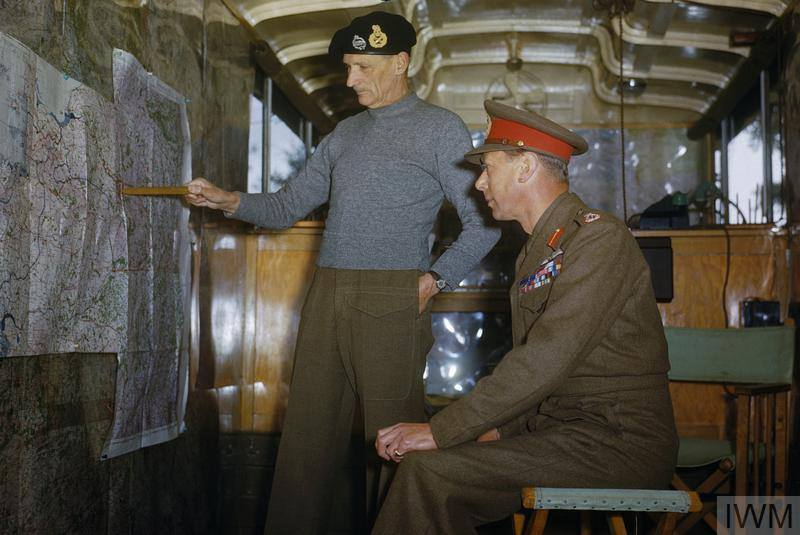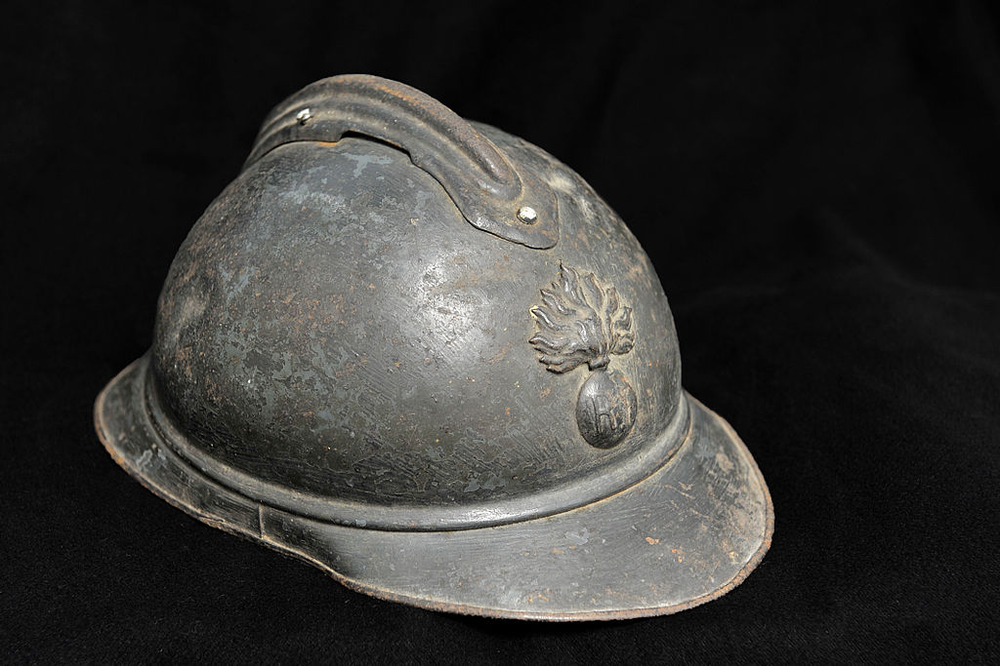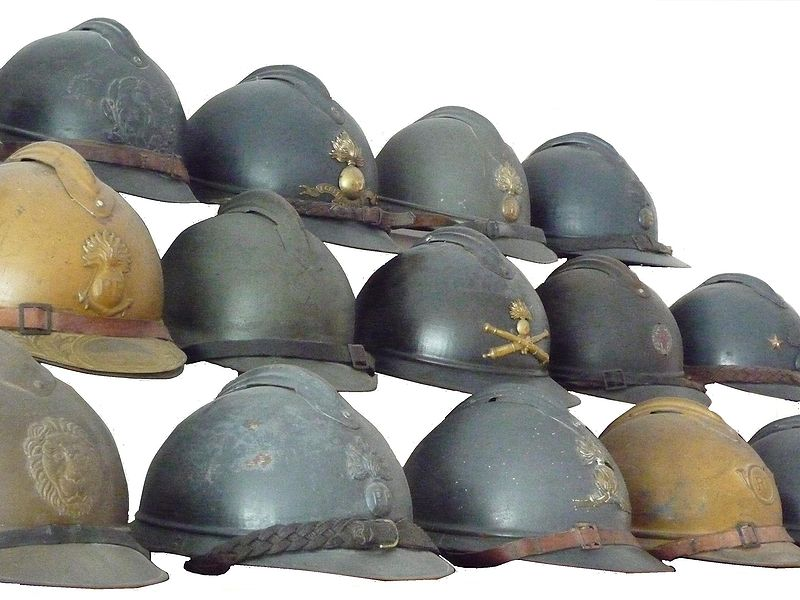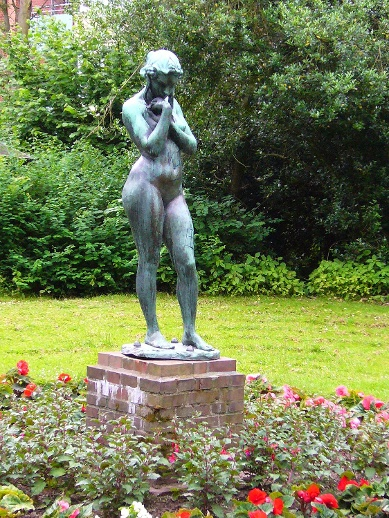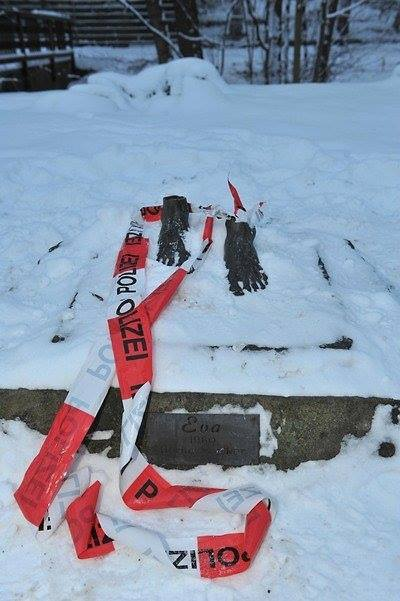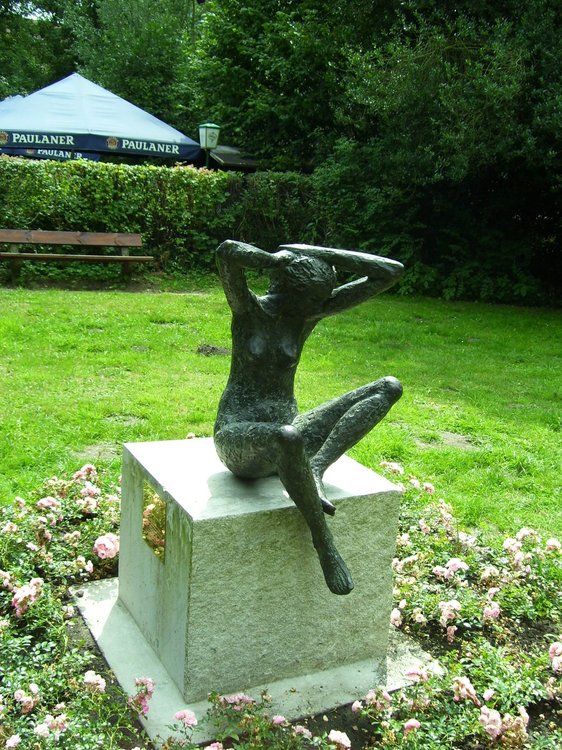Leaderboard
Popular Content
Showing content with the highest reputation on 20/04/19 in all areas
-
WW2 British North West Frontier Target Harmonisation Poster WW2 produced and used to practice coordinating the firing of members of a section to a specific targets.Very rare as few of these remain.Printed by J.Weiner Ltd London.From a War Office design and Crown Copyrighted.These details are to bottom left corner,printed on bottom right corner is 'North West Frontier Fig 3'. Fold lines throughout and some tears.Very rare.Size 60 inches x 24 inches.2 points
-
Finally found them Tommy, it's true you never know what you might find hidden away in the Bunker have just added them to the on-line shop so will post them here too. WW2 British Middle East Target Harmonisation Poster WW2 produced and used to practice coordinating the firing of members of a section to a specific targets.Very rare as few of these remain.Printed by J.Weiner Ltd London.From a War Office design and Crown Copyrighted.These details are to bottom left corner,printed on bottom right corner is 'Middle East Fig 3'. Fold lines throughout and some tears.Very rare.2 points
-
1 point
-
A crew from the 16th/5th Lancers, 6th Armoured Division, cleaning the gun barrel of their Crusader tank at El Aroussa in Tunisia, May 1943 Ted Dearberg /Imperial War Museum photo Evacuation of children, East London, 1. September 1939 The British government introduced food rationing In January 1940, to ensure fair shares for all at a time of national shortage. In January 1940, the British government introduced food rationing. This photo shows an adult's weekly ration of sugar, tea, margarine, 'national butter', lard, eggs, bacon and cheese in 1942. (photo and text IWM) Formed in 1938, Women’s Auxilliary Service (ATS) initially enabled women to contribute to the war effort as cooks, clerks, orderlies, store women and drivers. As the war wore on, however, these roles were expanded to allow more men to be released for front line service. More than 250,000 women served in the ATS during the Second World War including recruits from the West Indies. This photo shows a group of new ATS recruits as they wait for transport to take them to their training camp in 1943 Biggin Hill was also attacked on 1 September and again on 5 September. In this photograph, teleprinter operators Sergeant Joan Mortimer, Corporal Elspeth Henderson and Sergeant Helen Turner of the Women's Auxiliary Air Force stand outside the station's damaged buildings. All three were awarded the Military Medal for gallantry for staying at their posts during the raid. (IWM photo) 15 August 1940 saw the heaviest fighting of the Battle of Britain, as all three of the Luftwaffe's air fleets were deployed in a coordinated onslaught for the first time. The Luftwaffe made a similarly massive effort the following day, with three assaults over Kent and the Thames Estuary, Sussex and Hampshire, and at four different points between Harwich and the Isle of Wight. On 16 August 1940, Flight Lieutenant James Nicolson (pictured) was wounded during an action near Southampton, when his Hurricane was attacked by a Messerschmitt Bf 110. Despite his cockpit being on fire, he attacked and shot down another German fighter, suffering serious burns before bailing out. He became Fighter Command’s only recipient of the Victoria Cross during the Second World War. (IWM photo and text) 1940, fires around St. Paul's Cathedral Anekdote: Churchill zechte schon zum Frühstück Das Schickern hat schließlich eine lange Tradition. Winston Churchill verköstigte bereits morgens größere Mengen Wein zum Frühstück. Er hielt den Pegel tagsüber stabil und süffelte ihn gegen Abend noch mal in die Höhe. Er wurde dennoch 90 Jahre, gilt bis heute als einer der größten Staatsmänner des 20. Jahrhunderts und hinterließ der Nachwelt herrliche Bonmots, von denen viele im Brausekopf entstanden. Eines der berühmtesten im Gespräch mit der Labour-Politikerin Bessie Braddock, die ihn zu vorgerückter Stunde anraunzte. “Winston, Sie sind betrunken und sogar furchtbar betrunken.“ Was er, wie es heißt, angesichts erdrückender Beweislage keineswegs abstritt, sondern knarzte: “My Dear, und Sie sind hässlich und sogar furchtbar hässlich. Aber morgen bin ich wieder nüchtern und Sie sind immer noch hässlich.“ (quotation from "Stern" magazine article) November 1940, Churchill visits the ruins of Coventry Cathedral Auxiliary Territorial Service (ATS) plotters at work at Coastal Artillery Headquarters in Dover, December 1942 Photograph: Ted Dearberg/IWM/PA A 5.5-inch gun crew from 75th (Shropshire Yeomanry) Medium Regiment, Royal Artillery, in action in Italy, September 1943 Photograph: IWM/PA Women producing bullets and cannon shells in an underground munitions factory on the Wirral, Merseyside, 1945 Photograph: Ted Dearberg/IWM/PA Land Army members sawing larch poles for use as pit props at the Women’s Timber Corps training camp at Culford, Suffolk, 1943 Photograph: IWM/PA Land Army instructor Peggy Barnett kicks off training at a Women's Timber Corps camp at Culford, Suffolk. © IWM Girl guides and sea rangers selling savings stamps An Auxiliary Territorial Service spotter with binoculars at an anti-aircraft command post, December 1942 A civil defence warden inspects bomb-damaged buildings in Holborn, London 'ATS girls’ operate a mobile power plant on an anti-aircraft gun site at night A district messenger boy walking past a bombsite in London A battery of 3.7in anti-aircraft guns firing at night. All photographs: Ted Dearberg/Imperial War Museum St Paul’s Cathedral, London, sits amid destroyed buildings Celebrations at Waddington to mark Lancaster R5868 (S-Sugar) reaching 100 missions while serving with 467 squadron in May 1944 Without caption Frederick Godwin comforts a now homeless man after a V1 flying bomb attack of 1944, which sadly killed his wife and destroyed his home. In the background, rescue workers search the rubble and debris for survivors. Eindhoven, September 1944 Wellington GR Mk XIII of 221 squadron flies over the Aegean in March 1945 Kittyhawk IIIs of the 112 squadron preparing to take off at a desert airstrip in Tunisia in April 1943 Hurricane Mk IIDs, known as ‘flying tin openers’ preparing for takeoff from Gabes, Tunisia, in April 1943 Avro Lancasters of the 44 (Rhodesia) squadron in September 1942 Allied commanders from left, General Omar Bradley, Admiral Bertram Ramsey, Air Chief Marshal Sir Arthur Tedder, Supreme Allied Commander General Dwight D Eisenhower, General Sir Bernard Montgomery, Air Chief Marshal Trafford Leigh-Mallory, and Lieutenant-General Walter Bedell Smith. These men were responsible for the success of Operation 'Overlord' Left to right: Air Chief Marshal Sir Charles Portal (Royal Air Force), Field Marshal Sir Alan Brooke (British Army), Winston Churchill and Admiral Sir Andrew Cunningham (Royal Navy) , Gardens, 10, Downing Street, May 1945 Probably a black and white photo later hand coloured, none the less, dramatic Berlin, 12. July 1945. Marschall Schukow received the Order of the Bath from Montgomery. On the right are NKWD officials. (Schukow hatte das Gemüt eines Schlachterhundes) Some of these photos may have already been posted in previous articles.1 point
-
1 point
-
1 point
-
Offical insignia was metal, these differed on the 1915 models from those of the later 1926 model worn in WW2, both types prevailed. Take a look under Adrian Insignia under google pictures, or under Wikipedia, you will find a big selection and information. A picture of a standard French Adrian, horizon blue, of WW1 for infantry and some other troops, and of a grouping of different types, some with later added badges, the badge should always be the same material and colour of the helmet for campaign use. Officers sometimes had a more elaborate type of chinstrap, plaited leather.1 point
-
Just a couple of years ago, a bronze statue was stolen from the Tonndorfer Cemetery in Wandsbek. The statue had stood for many years opposite the chapel near the cemetery gates. It had greatly enhanced the scene, where older people could sit on the nearby benches and observe the statue. This statue was known as "Die Psyche" and was around 100 years old It now seems to have become common practice, and public monuments are no longer safe, especially when they are of bronze. Luckily, the statue was later recovered, but in a dismantled condition, the feet had been sawn-off. It is hoped that it can be restored, but the future of this object of art is still uncertain, as to where it will be in the future. There have been quite a number of such statues stolen in Hamburg and Wandsbek. Others have never been recovered. A further statue by Otto Stichling, also over 100 years old and known as "Das Junge Weib", the young woman, was stolen from it's pedestal behind the "Restaurant Eichtal" in Wandsbek's Eichtalpark in 2010, and has never been recovered.1 point
-
1 point
-
1 point





